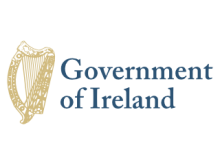Resource information
These Regulations designate a coastal area as a Special Protection Area in accordance with Article 4 of Habitats Directive for protection purposes set out in Schedule 3 (coastal lagoons). The Minister shall, in accordance with the Regulations of 2011, establish and publish such particular conservation objectives as he or she, from time to time, considers necessary for the Special Area of Conservation with regard to the natural habitat type and animal and plant species specified in Schedule 3. Schedule 4 lists activities that require the consent of the Minister because of their potential to cause disturbance or damage to the natural habitat types and animal and plant species specified in Schedule 3. They include: introduction, or re-introduction, of plants or animals not found in the area (consent is not required for the planting of crops on established reseeded grassland or cultivated land); planting of trees or multi-annual bioenergy crops; application of pesticides, including herbicides; application of fertilizer near water; increase in stock density; certain changes in agricultural practice; harvesting marine invertebrate species in intertidal areas; certain waterworks Operations or activities other than those listed at Schedule 4 to these Regulations, such as effluent discharge, construction work, aquaculture, fishing or forestry, require a licence or permission from the appropriate consent authority.
Implements: Council Directive 92/43/EEC on the conservation of natural habitats and of wild fauna and flora (1992-05-21)
Implements: European Communities (Birds and Natural Habitats) Regulations 2011 (S.I. No. 477 of 2011). (2011-09-21)



